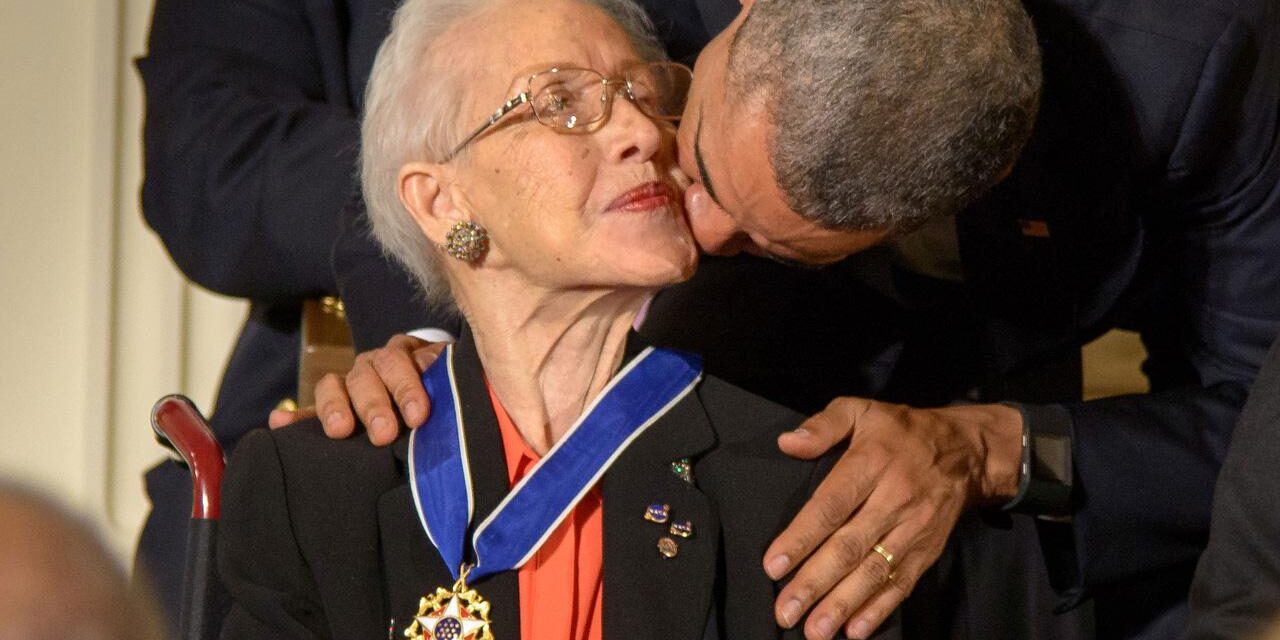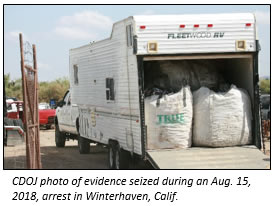
By Danny R. Johnson/Political News Editor
WASHINGTON, DC – Katherine G. Johnson, the NASA mathematician who played a key role in helping America win the space race and whose story was featured in the 2016 film Hidden Figures, died Monday. She was 101 years old.
From the moment she learned how to count, Johnson fell in love with numbers. “I counted everything. I counted the steps to the road, the steps up to church, the number of dishes and silverware I washed…anything that could be counted, I did,” she said. Johnson’s unquenchable passion would take her far beyond the segregated schools of her childhood in West Virginia and all the way to the halls of NASA, where she would become one of the early trailblazers for women and African Americans in the space program.
Born Aug. 26, 1918, in White Sulphur Springs, W.Va., to Joshua and Joylette Coleman, Katherine Coleman Goble Johnson was an exceptionally gifted child. Bolstered by her father’s advice that she was “no better than anyone else, and no one is better than you,” Johnson excelled in school—so quickly, in fact, she blew through her town’s curriculum and completed the eighth grade at just 10 years old. At the time, White Sulphur Springs didn’t have a high school for African-American students, but because of Johnson’s extraordinary intellect, her family relocated 120 miles away to Institute, W.Va., where she attended high school on the campus of West Virginia State.
The experience changed Johnson’s life. “You got the best education there could be at the time [in Institute],” Johnson said in the film Rise Up West Virginia. “You knew everybody. It was a small high school and it was pleasant to be there, but everybody knew you. Everybody in the high school knew everybody in the college and it was just like being at home.”
After Johnson completed high school at 14, she enrolled in West Virginia State College where she was inspired to continue her rigorous study of mathematics, thanks to her mentor William W. Schieffelin Claytor, who encouraged her to follow in his footsteps. “Many professors tell you that you’d be good at this or that, but they don’t always help you with that career path,” Johnson said of Claytor, who was the third black person to ever earn a Ph.D. in mathematics. “Professor Claytor made sure I was prepared to be a research mathematician.”
In 1937, when she was just 18, Johnson graduated summa cum laude from West Virginia State with degrees in mathematics and French. A year later, she left her teaching job at a black public school to become one of three African-American students (and the only black woman) to integrate the graduate school at West Virginia University in Morgantown. Though she was handpicked by the institution’s president, John W. Davis, Johnson left before completing her graduate studies to start a family with her husband, James Francis Goble. The couple would go on to have three daughters, but Johnson never gave up her passion for math.
More than a decade after leaving graduate school to focus on her family, Johnson learned of an opportunity that would change the course of her life. A family friend told her and her husband, who were both public school teachers at the time, that the National Advisory Committee for Aeronautics (NACA) was hiring African-American women to become “human computers” and work in its Guidance and Navigation Department. Johnson applied, but NACA had already filled the position. Never willing to give up, however, she applied again the following year and was hired. Johnson began working at NACA, a precursor to the National Aeronautics and Space Administration (NASA), in 1953.
At NACA, and later NASA, Johnson completed complex calculations and analyzed data from flight tests and downed airplanes. In 1956, shortly after beginning her career, her husband James died of cancer. The heartbreaking setback didn’t derail Johnson’s career, however. The following year, she provided mathematical calculations for “Notes on Space Technology” (pdf), a collection of lectures by NASA engineers in the Flight Research Division and the Pilotless Aircraft Research Division. Because of this, she was called on to be part of the Space Task Group.
In 1960, Johnson made history as the co-author of the report, “Determination of Azimuth Angle at Burnout for Placing a Satellite HYPERLINK “https://ntrs.nasa.gov/archive/nasa/casi.ntrs.nasa.gov/19980227091.pdf”Over HYPERLINK “https://ntrs.nasa.gov/archive/nasa/casi.ntrs.nasa.gov/19980227091.pdf” a Selected Earth Position” (pdf). The project included calculations that specified the landing position of a spacecraft, and it marked the first time a woman in the Flight Research Division was listed as the author of a research report. A year later, Johnson completed trajectory calculations for the 1961 Freedom 7 mission, the first time the U.S. put a man in space. In 1962, Johnson was called upon to complete complex calculations that would track the orbital flight path from takeoff to landing for John Glenn’s Friendship 7 mission. Though NASA had built a massive network of IBM computers to run the calculations, Glenn famously asked NASA officials to “get the girl” to check the numbers before he took off. Johnson recalled the famed astronaut saying, “If she says they’re good, then I’m ready to go.” The mission was a success thanks to Johnson’s diligent work.
In spite of her impact on America’s space program, Johnson’s work went largely unnoticed by the wider public until Margot Lee HYPERLINK “http://margotleeshetterly.com/”Shetterly’s 2016 book, Hidden Figures: The American Dream and the Untold Story of the Black Women Mathematicians Who Helped Win the Space Race, which became the award-winning film, Hidden Figures. Acclaimed actress Taraji P. Henson played Johnson in the film and paid homage to the groundbreaking mathematician and her NASA peers Mary Jackson and Dorothy Vaughn during several awards shows.
“I remember getting this script and being very upset, because it felt like a dream was stolen from me,” Henson said at the 2017 MTV Awards. “And it became my mission, and everyone’s mission who was involved with this film, to dispel that myth so that another young girl would not grow up thinking that her mind wasn’t capable of grasping math and science. If it were not for these women, we wouldn’t be in space.”
After more than three decades at NASA’s Langley Research Center headquarters in Hampton, Va., Johnson retired in 1986, leaving a long history of success in her wake. During her time there, she authored or co-authored 26 reports, worked on the space shuttle and the Earth resources satellite, and performed calculations for the Apollo program, which led to the first Americans landing on the moon. Though she had to overcome great adversity to reach her goals, Johnson loved her time at NASA. “I found what I was looking for at Langley,” she said. “This was what a research mathematician did. I went to work every day for 33 years happy. Never did I get up and say, ‘I don’t want to go to work.’” In 2017, NASA dedicated a new, state-of-the-art research facility at Langley in Johnson’s name.
In 2015, President Barack Obama awarded Johnson America’s highest civilian honor, the Presidential Medal of Freedom, noting, “Katherine was a pioneer who broke the barriers of race and gender, showing generations of young people that everyone can excel in math and science, and reach for the stars.”
In an earlier speech, President Obama explained, “Black women have been a part of every great movement in American history—even if they weren’t always given a voice.”
By giving her the nation’s highest civilian honor, he ensured Johnson’s legacy and accomplishments will never go unnoticed again.



